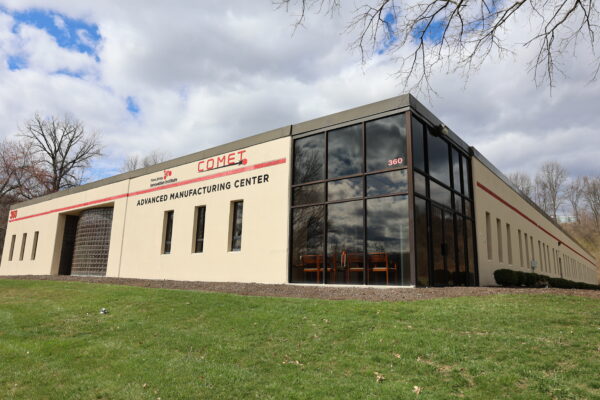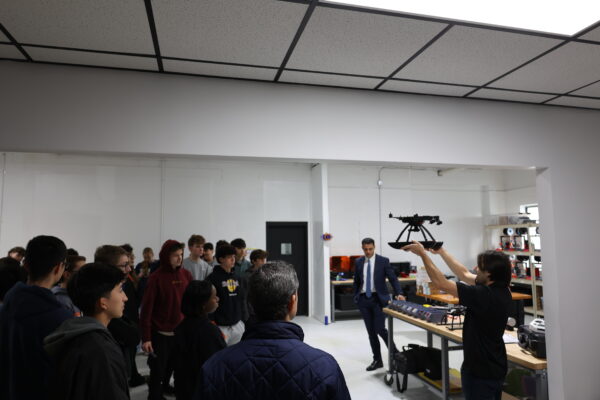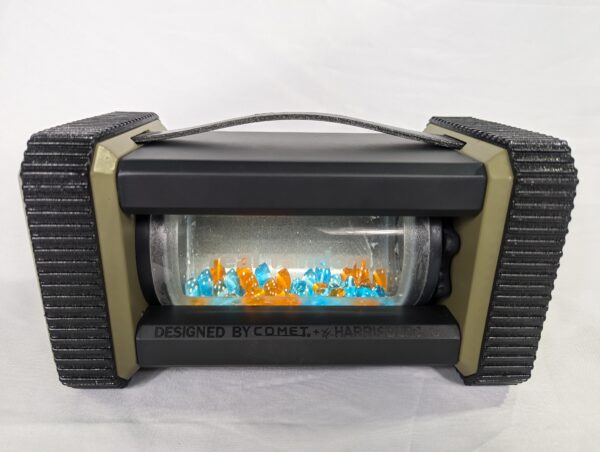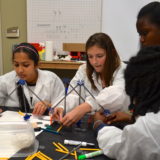May 7, 2024

Meet Nick Warholak, the lead designer at COMET and AEOP GEMS alumnus, who is passionate about the 3D manufacturing field and dedicated to learning – and getting others to learn about – all there is to discover across STEM.
How did you get involved with AEOP? What was your experience like?
My dad, who was a GEMS teacher, introduced me to the program. I served as a student mentor for two years in 2016 and 2017.
During my time in the program, I sharpened STEM skills that were otherwise inaccessible to me. Where else would I have had the opportunity to work with a bomb-diffusing drone? I collaborated with many talented students, and it was inspiring to see students who are taking the initiative to learn more about STEM programs. We were all genuinely excited to be there, and the students’ enthusiasm was very contagious.
What are you doing today?
I work in advanced manufacturing and 3D printing at The COMET Center in New Jersey. My background is in industrial design, and I am involved in workforce development. That means I train students, interns, or veterans on how to be successful in an additive manufacturing setting. My main focus is prototype development, which involves helping other companies and groups take their initial concept to a physical, presentable product. Here at COMET, my team and I are also involved in print production, industry collaboration, and validation research.
What’s one of your favorite memories from your time participating in AEOP?
We were programming LEGO Mindstorm robots, which have a pitch modulator that allows you to produce certain tones. I came back into the room from my lunch break one day, and my students were very eager to share something new they had just programmed their robot to do: perform All Star by Smash Mouth.

This moment reflected, for me, how deeply engaged the students were with the field. What we were doing in GEMS wasn’t just work; students saw it as something just as fun as playing video games or scrolling on their phones. They were able to dive in and make it their own.
How has AEOP helped you both professionally and personally?
GEMS taught me how to work collaboratively with students in a STEM setting and gave me extremely valuable experience in DoD support efforts. Right after AEOP, I secured an internship sponsored by Picatinny, where I developed expeditionary drones designed to function in GPS-denied environments. The director of that internship remembered my work years later and eventually hired me to my current position, so I really have AEOP to thank for my entire career progression.
What are you currently working on?
 One recent project involved creating the enclosure and interface for a truly random number generator. There were many aesthetic considerations, and the client wanted it completed within three weeks so it could be presented at an international conference. The client presented us with the technical constraints that we then had to design around, such as a chamber of liquid for agitating dice, and a specialized camera that images those dice to produce the randomized sequence. Per the client’s request we designed the product with military considerations in mind, making sure to incorporate ruggedized features and traditional army aesthetics. Multiple machines and skill sets were necessary to complete this build in the short window we had, but even with all the complexities involved it shipped out on time and left our customer very satisfied.
One recent project involved creating the enclosure and interface for a truly random number generator. There were many aesthetic considerations, and the client wanted it completed within three weeks so it could be presented at an international conference. The client presented us with the technical constraints that we then had to design around, such as a chamber of liquid for agitating dice, and a specialized camera that images those dice to produce the randomized sequence. Per the client’s request we designed the product with military considerations in mind, making sure to incorporate ruggedized features and traditional army aesthetics. Multiple machines and skill sets were necessary to complete this build in the short window we had, but even with all the complexities involved it shipped out on time and left our customer very satisfied.
What is the best piece of advice you could give to someone interested in applying to AEOP or other STEM programs?
I never stop being impressed with the new generation coming in – interns share these new cool party tricks, like ChatGPT. From a mentor or boss perspective, it’s essential to leverage these new skill sets that younger generations have better access to and familiarity with. Play to your advantages, and there’s a good chance you’re going to catch someone’s eye.
Also, don’t let imposter syndrome slip in! If you’ve entered the industry more recently and find yourself sharing insights gained from a one-hour YouTube video with someone who has been in the field for 30 years and is more involved with traditional manufacturing, you might just blow their mind. Don’t be shy to show off your skills, and don’t sell yourself short.
There are so many fields that haven’t changed a lot and may not see significant changes in the next decades. However, additive manufacturing is not one of those fields. Every year – or even every month – new processes and methods of making things emerge. It’s important to always be on the lookout for new information.
If you want to be involved in STEM, you need to master fundamentals first. However, if you are interested in developing new things and being involved in driving innovation and cutting-edge technology, additive manufacturing offers endless opportunities. You’re never too young to read articles to learn more. Go down rabbit holes – you never know what information will be useful in the future.
Keep your eyes and ears open. All of STEM is an exciting field.
To learn more about GEMS, visit https://www.usaeop.com/program/gems/.

Gains in the Education of Mathematics and Science (GEMS)
Gains in the Education of Mathematics and Science (GEMS) is an U.S. Army-sponsored, summer STEM enrichment program for middle and high school students that takes place in participating U.S. Army research laboratories and engineering centers.
More About Gains in the Education of Mathematics and Science (GEMS)Find a Volunteering Opportunity
Visit our Program Volunteers page for a tool to find the best opportunity for you.
